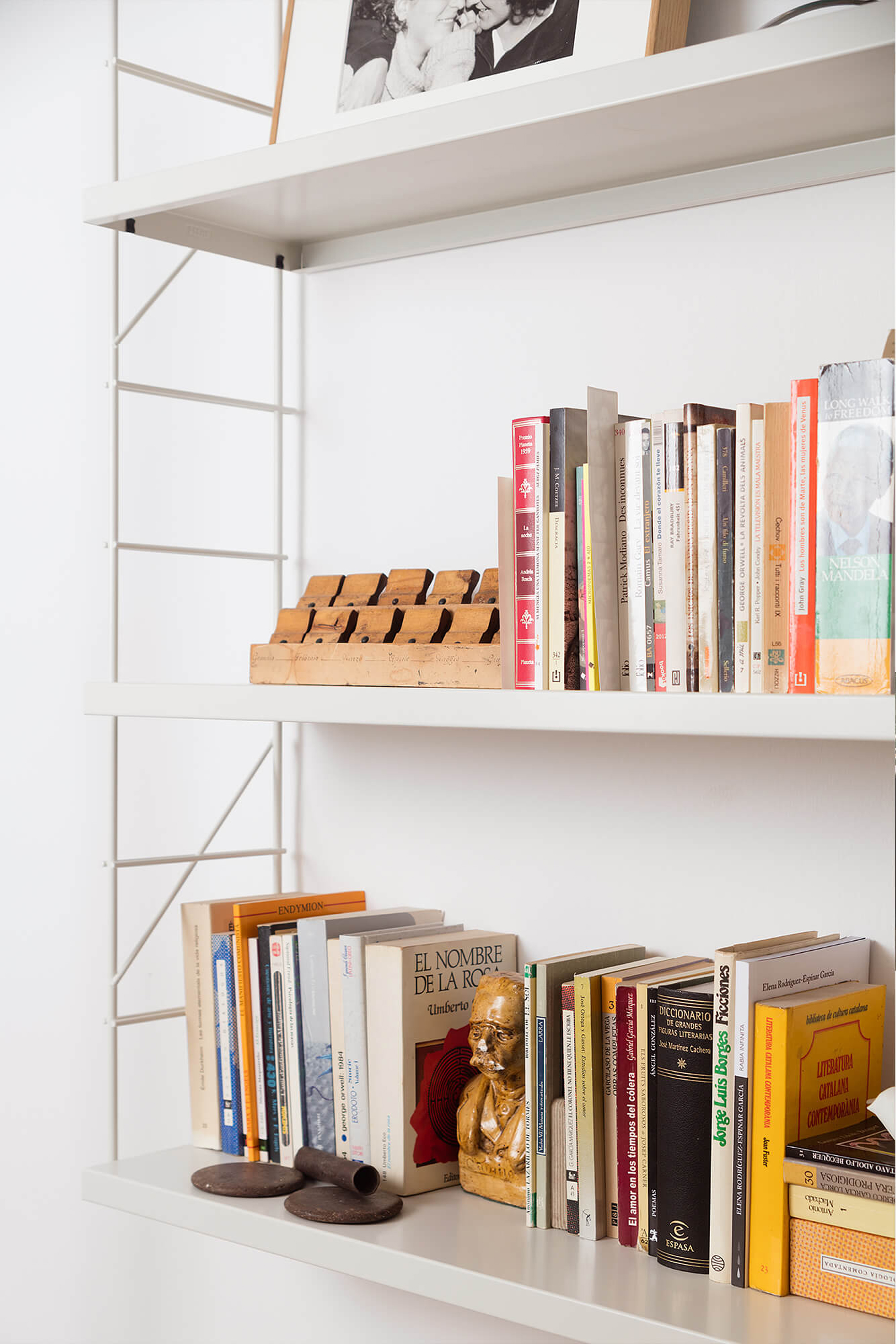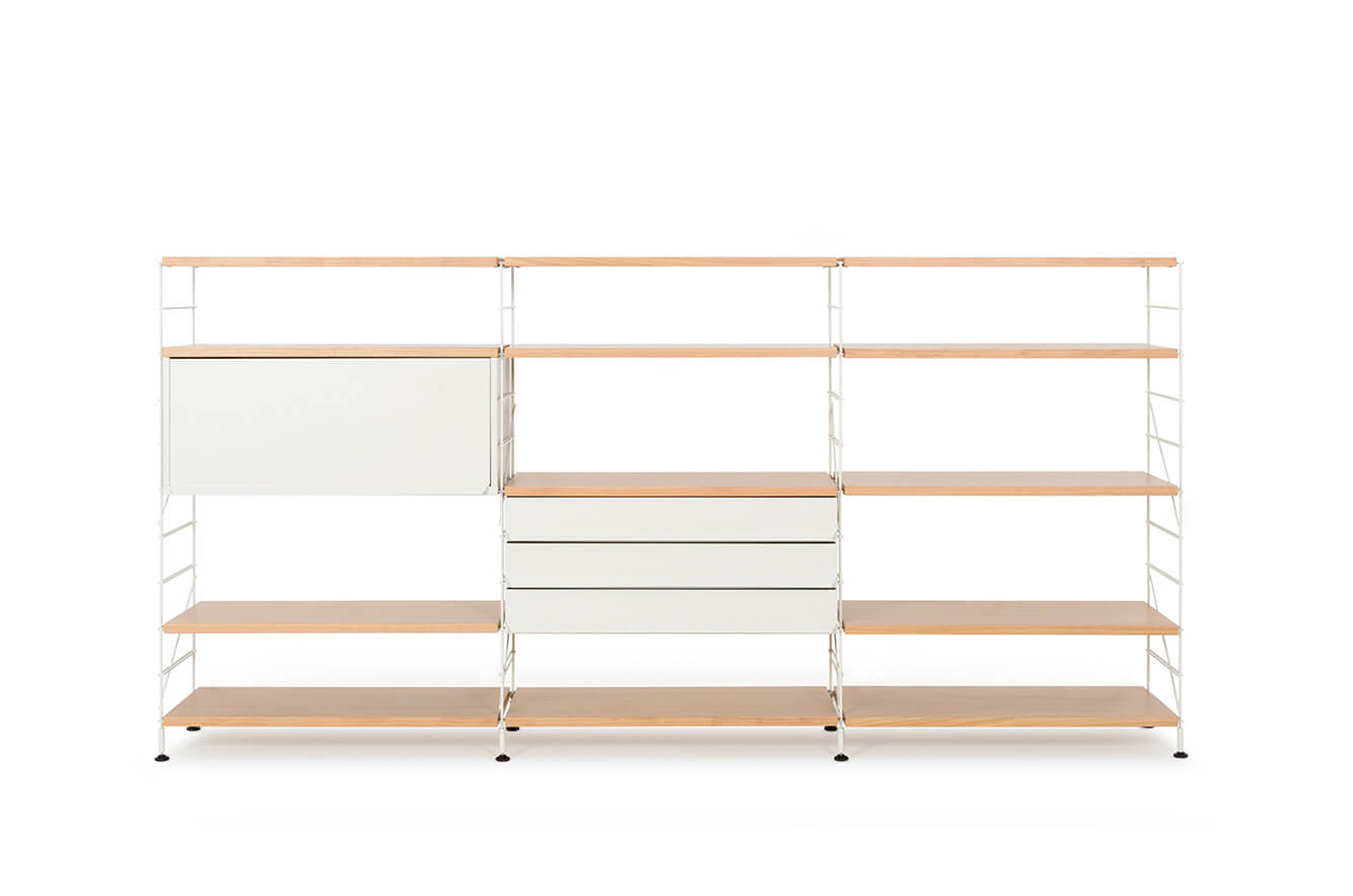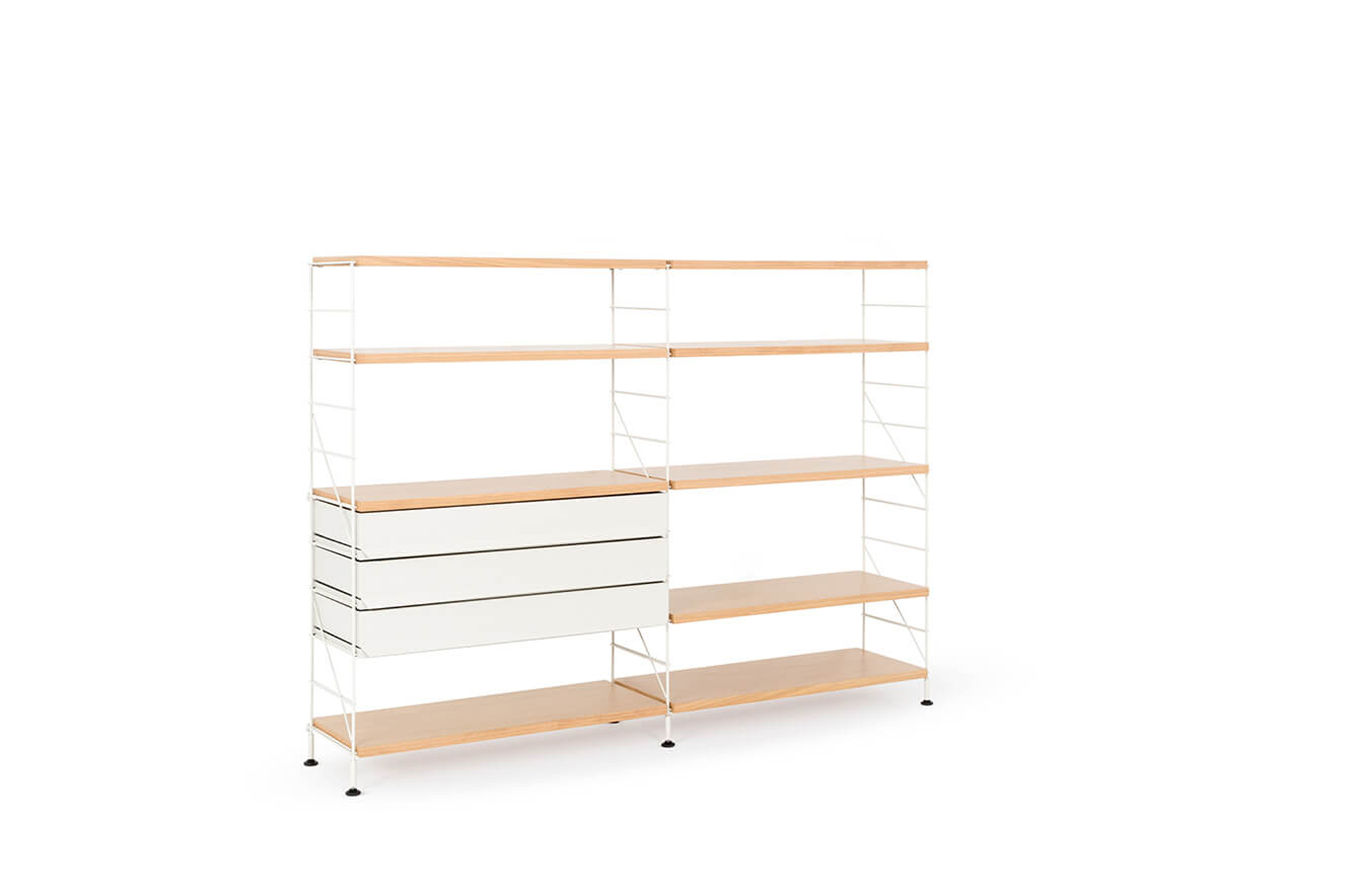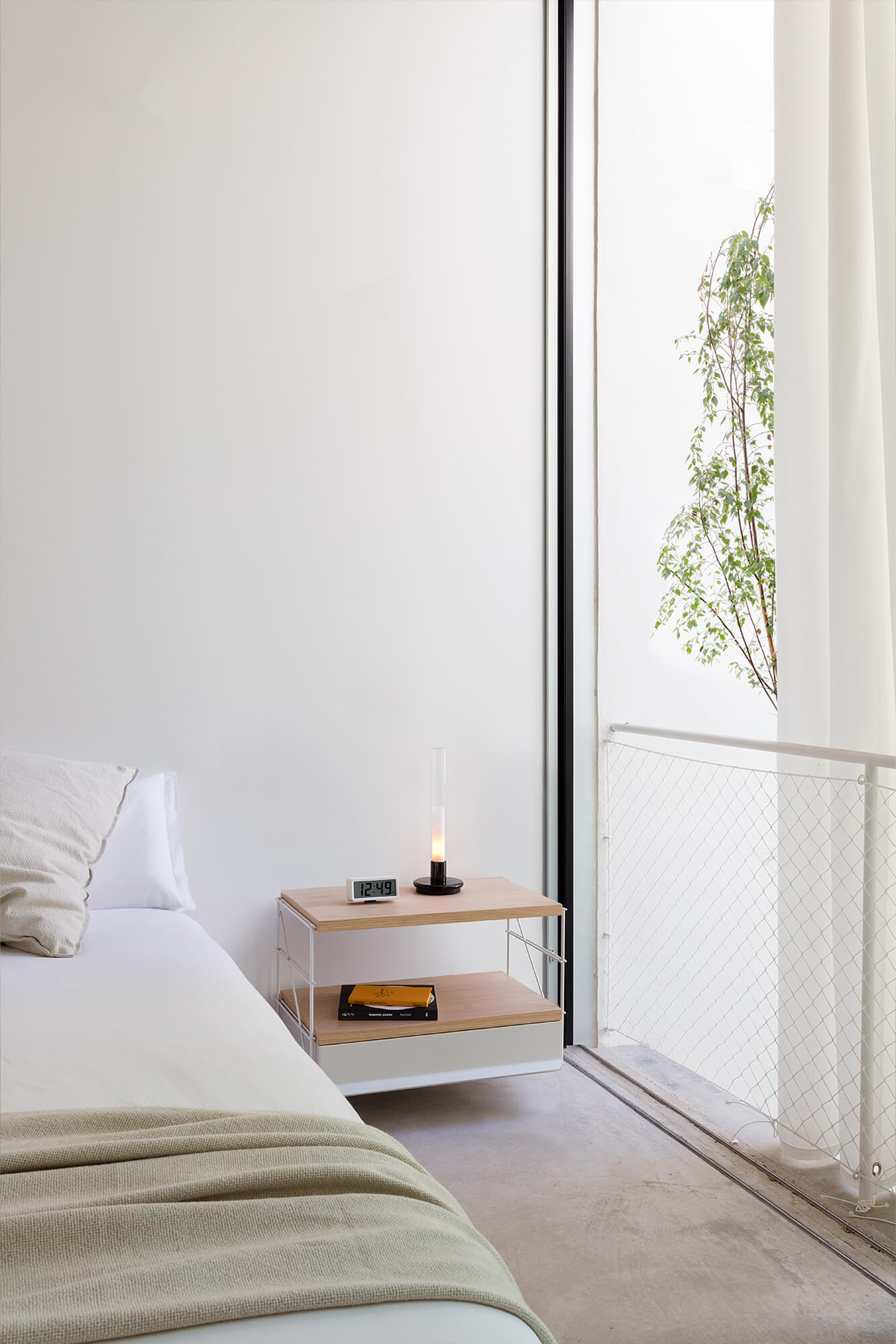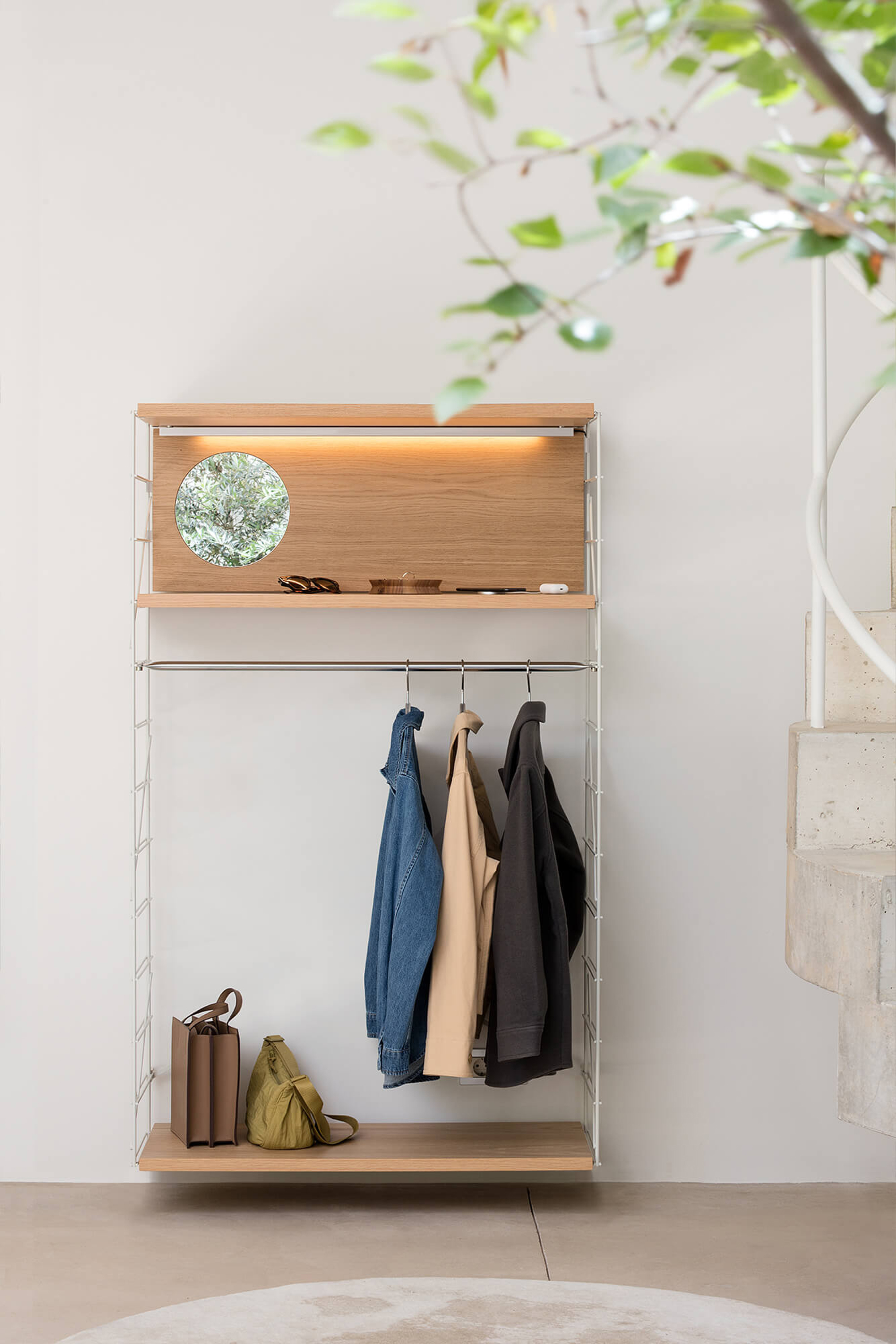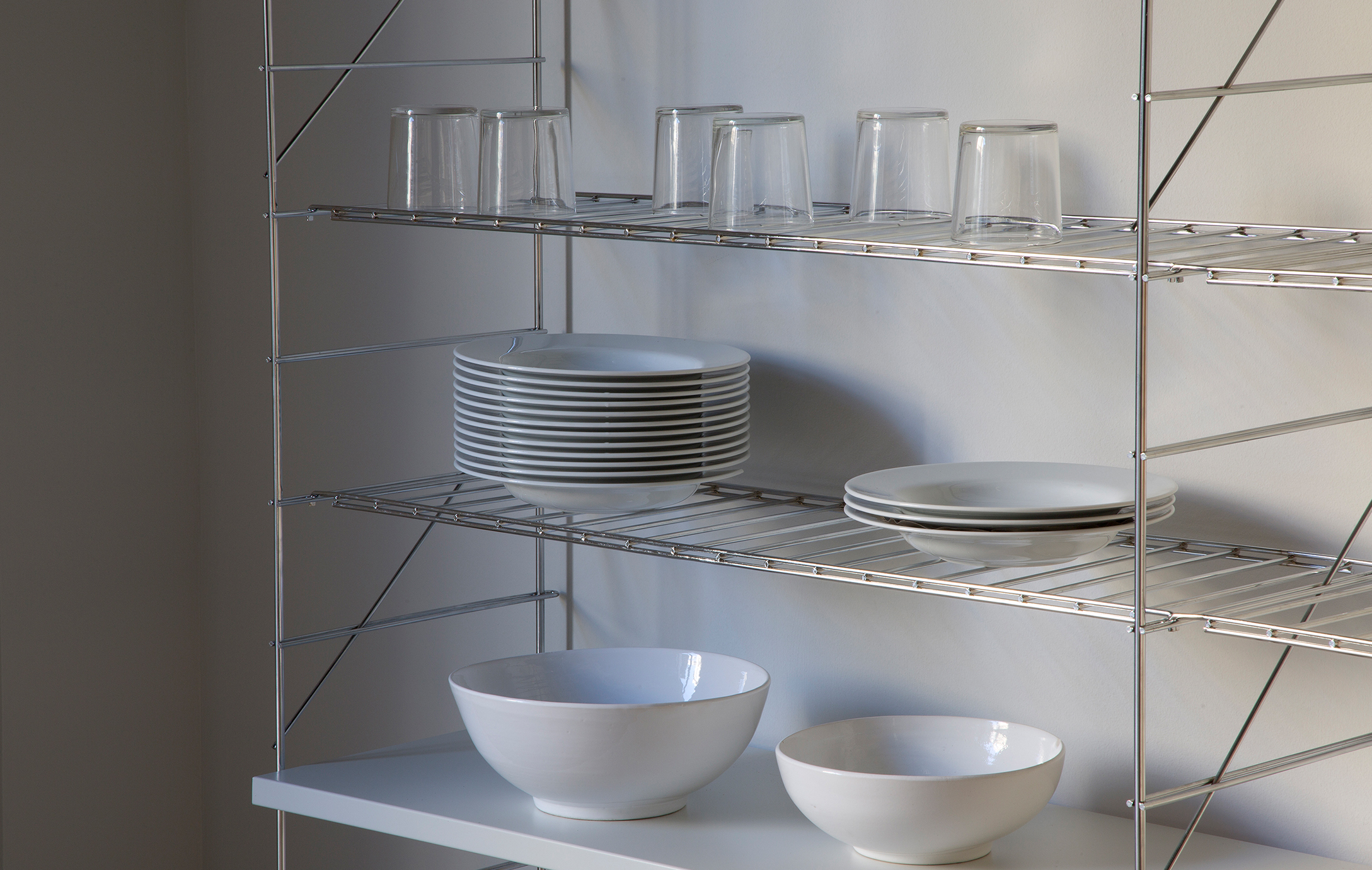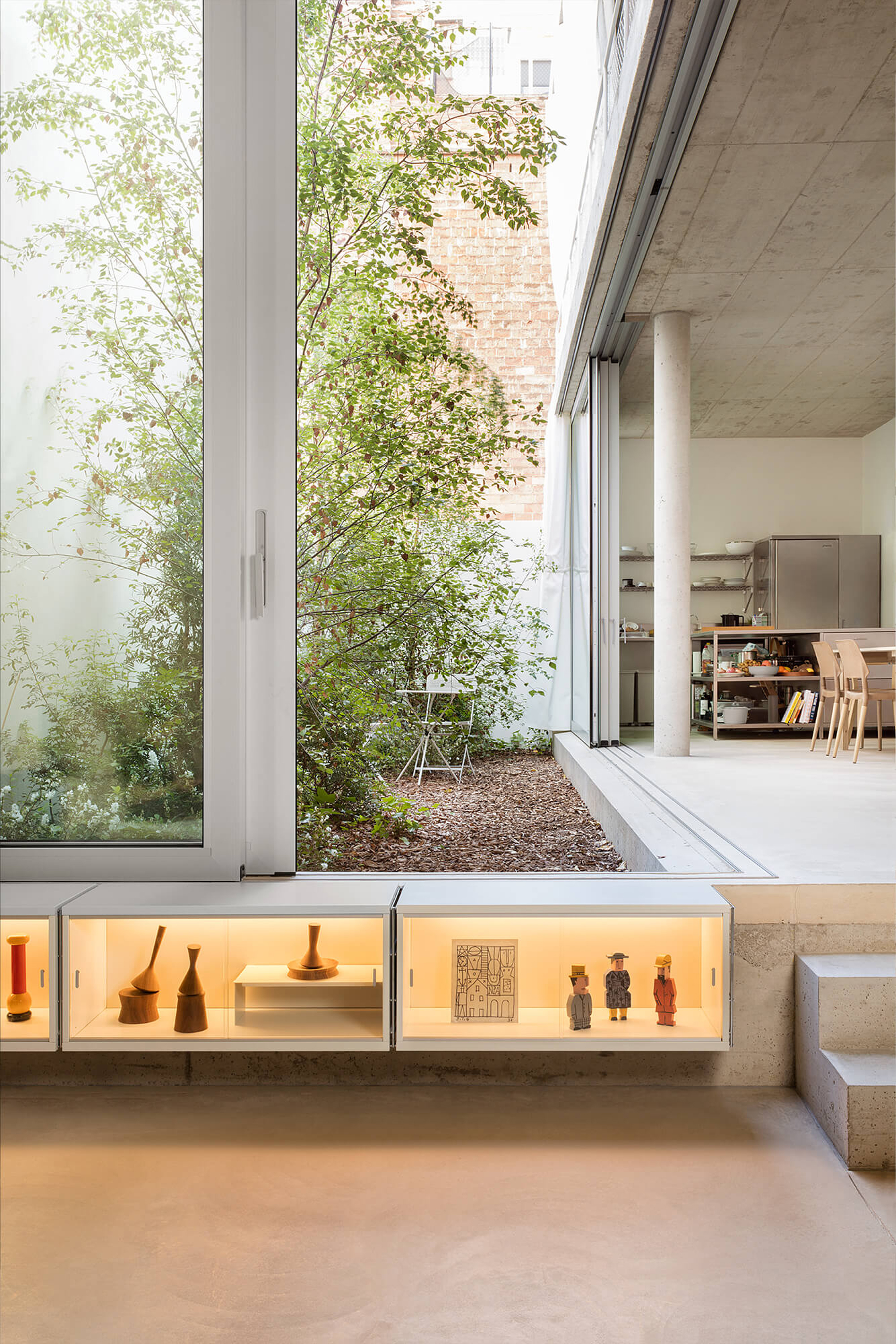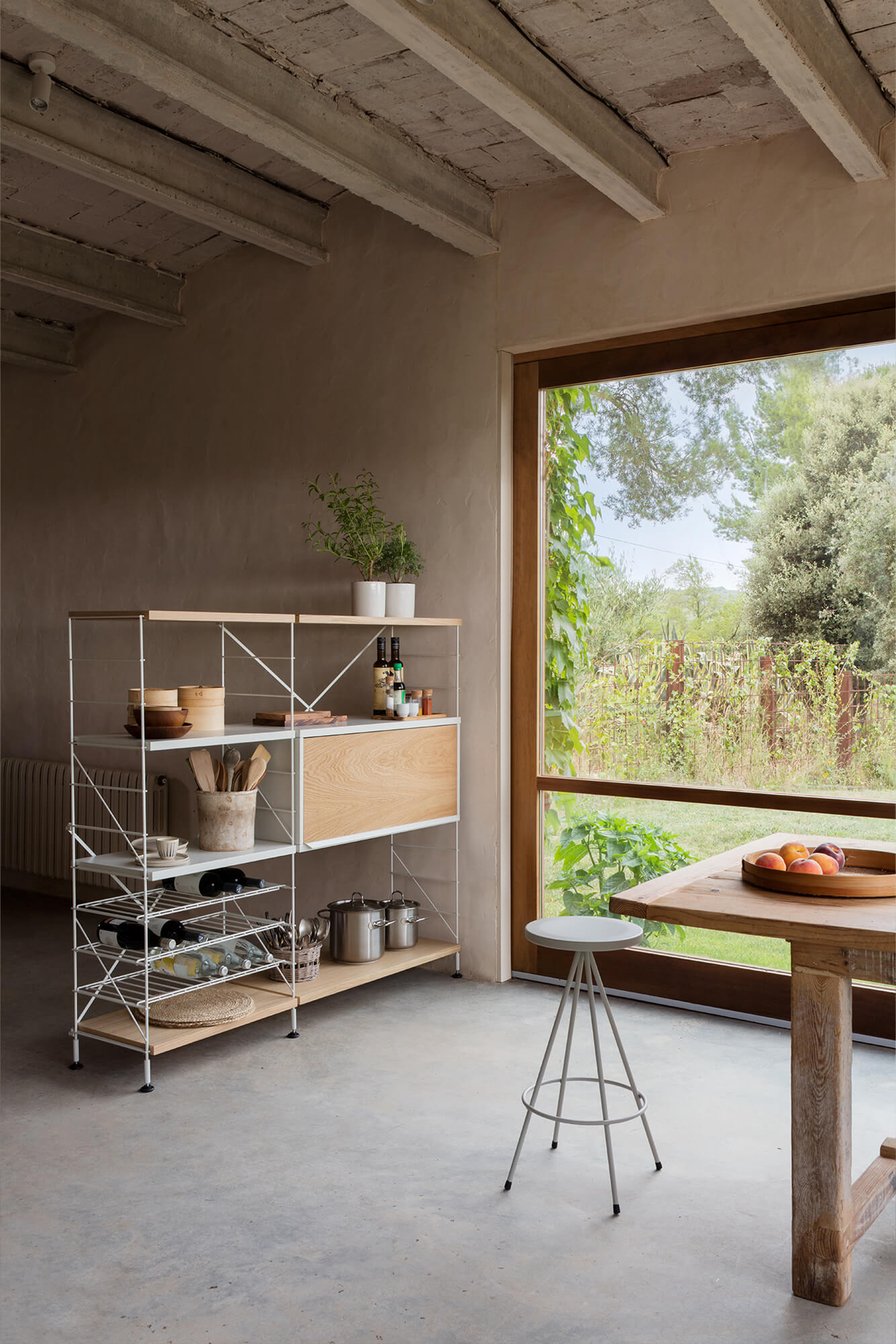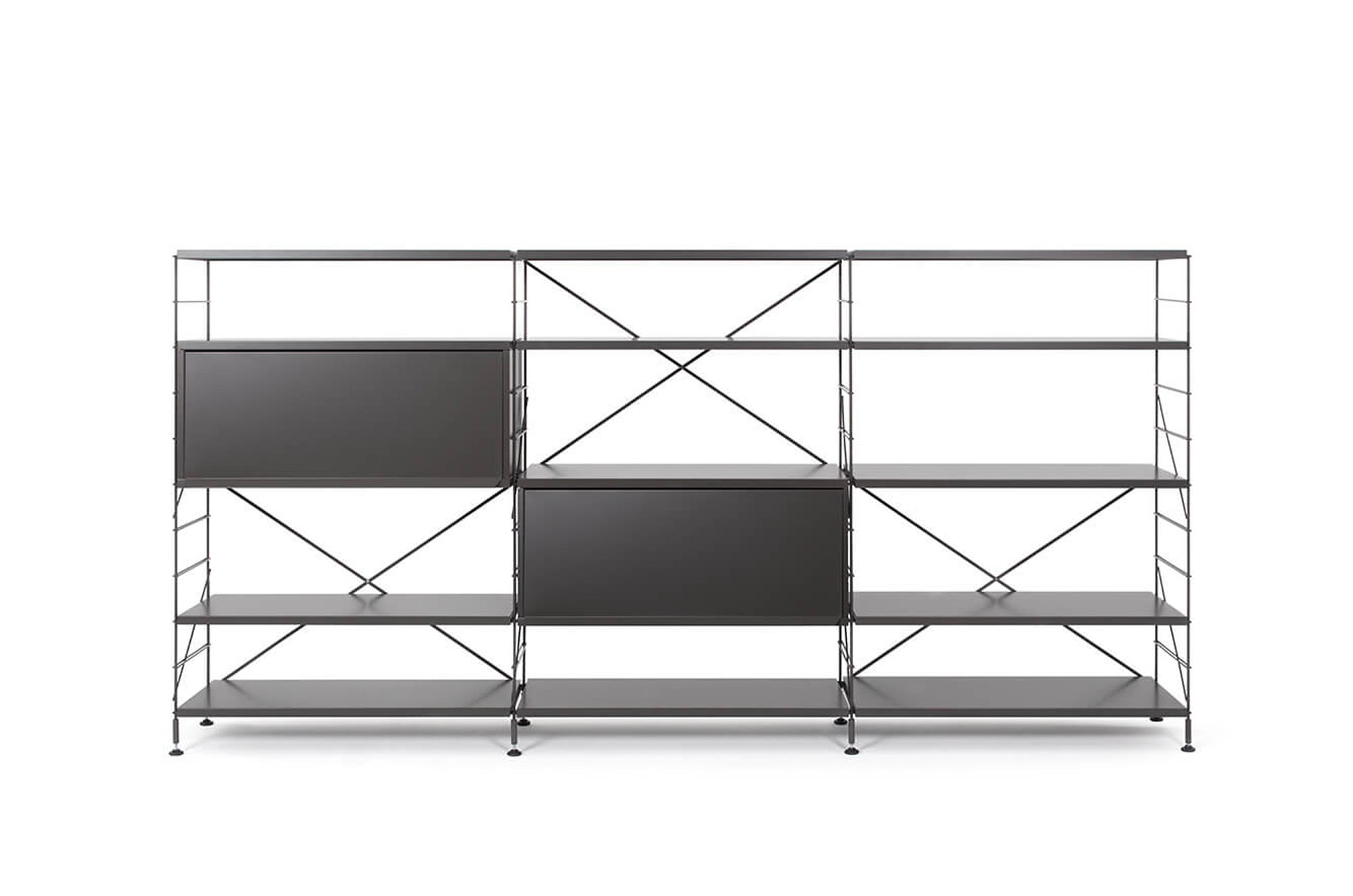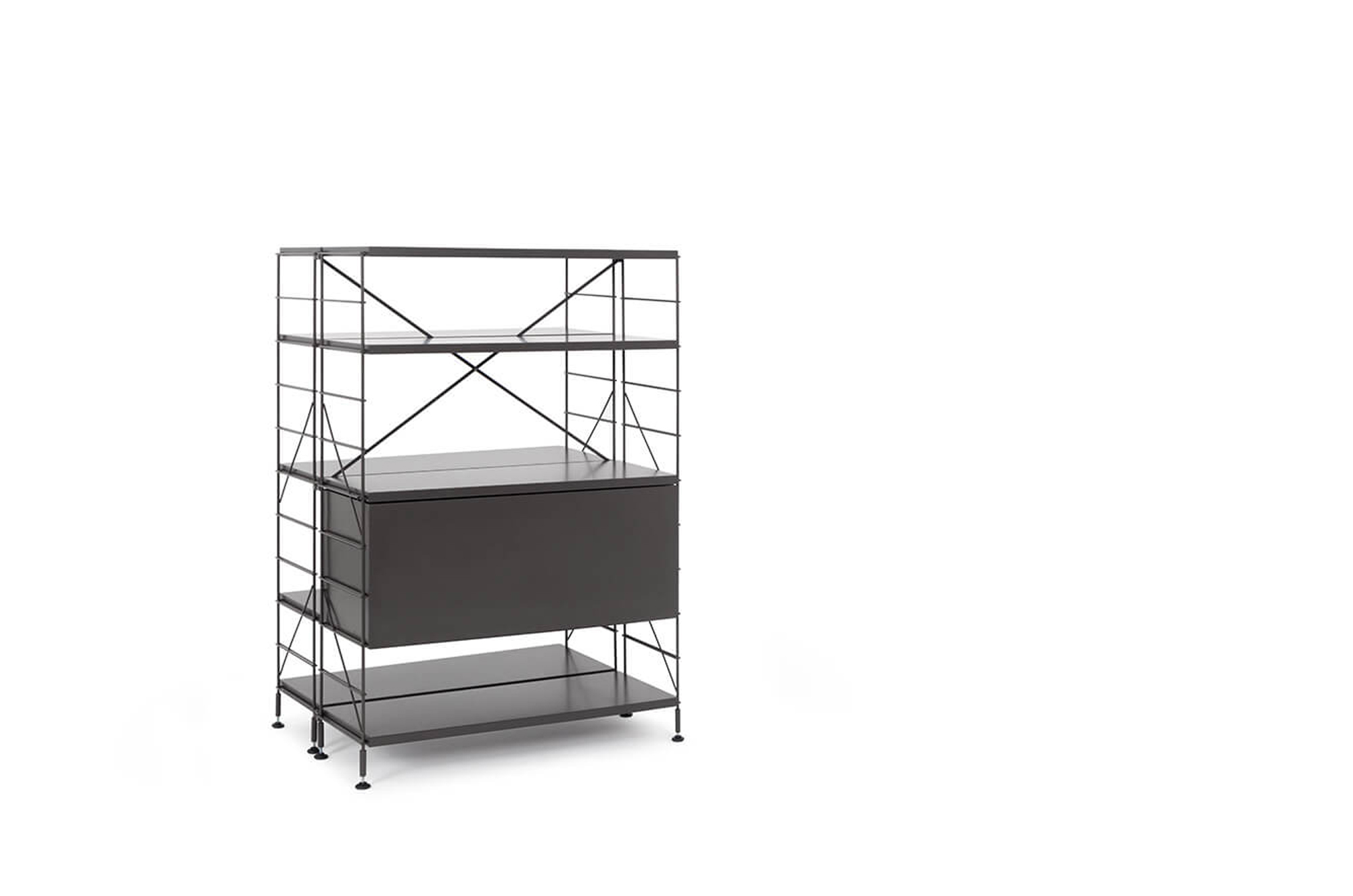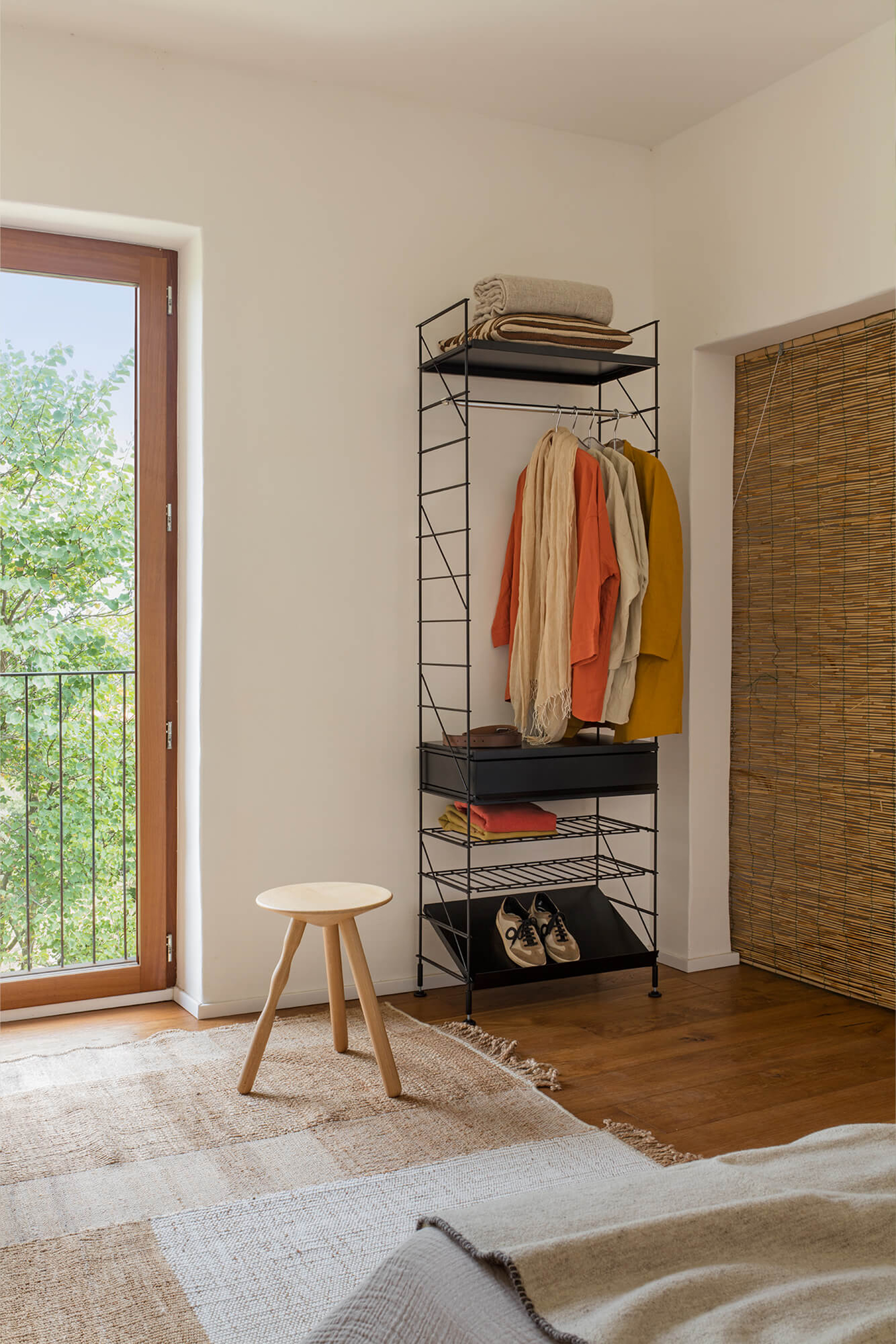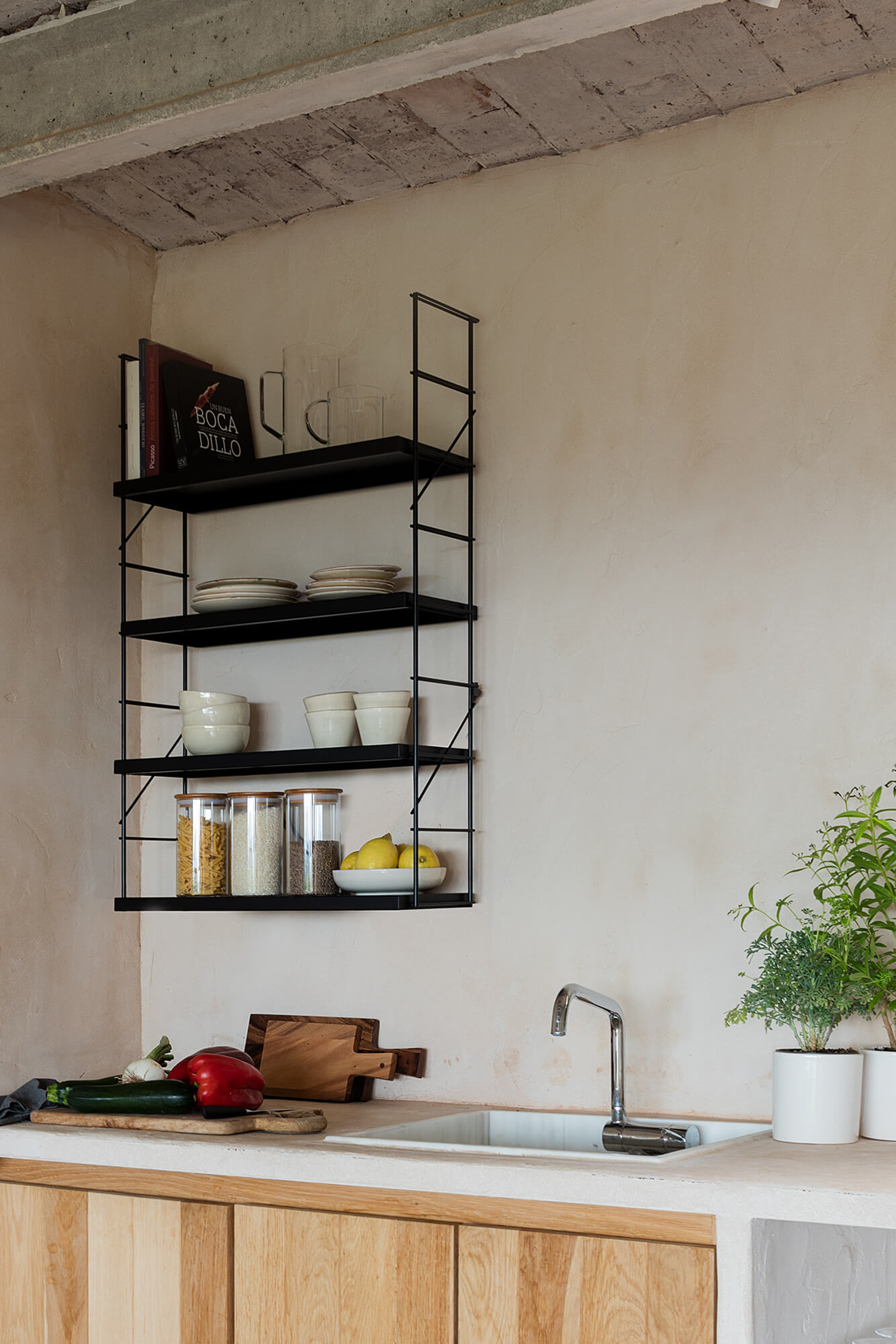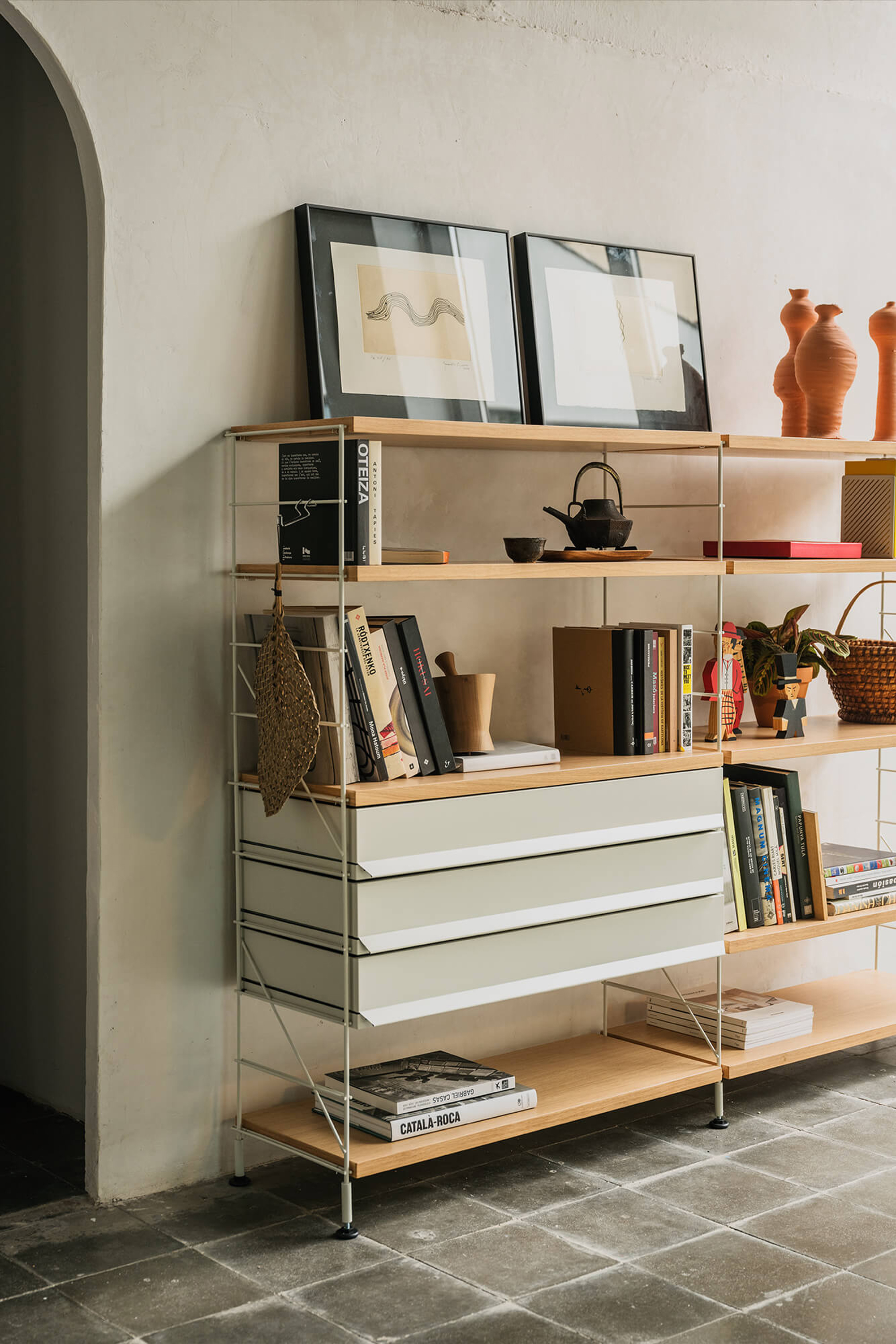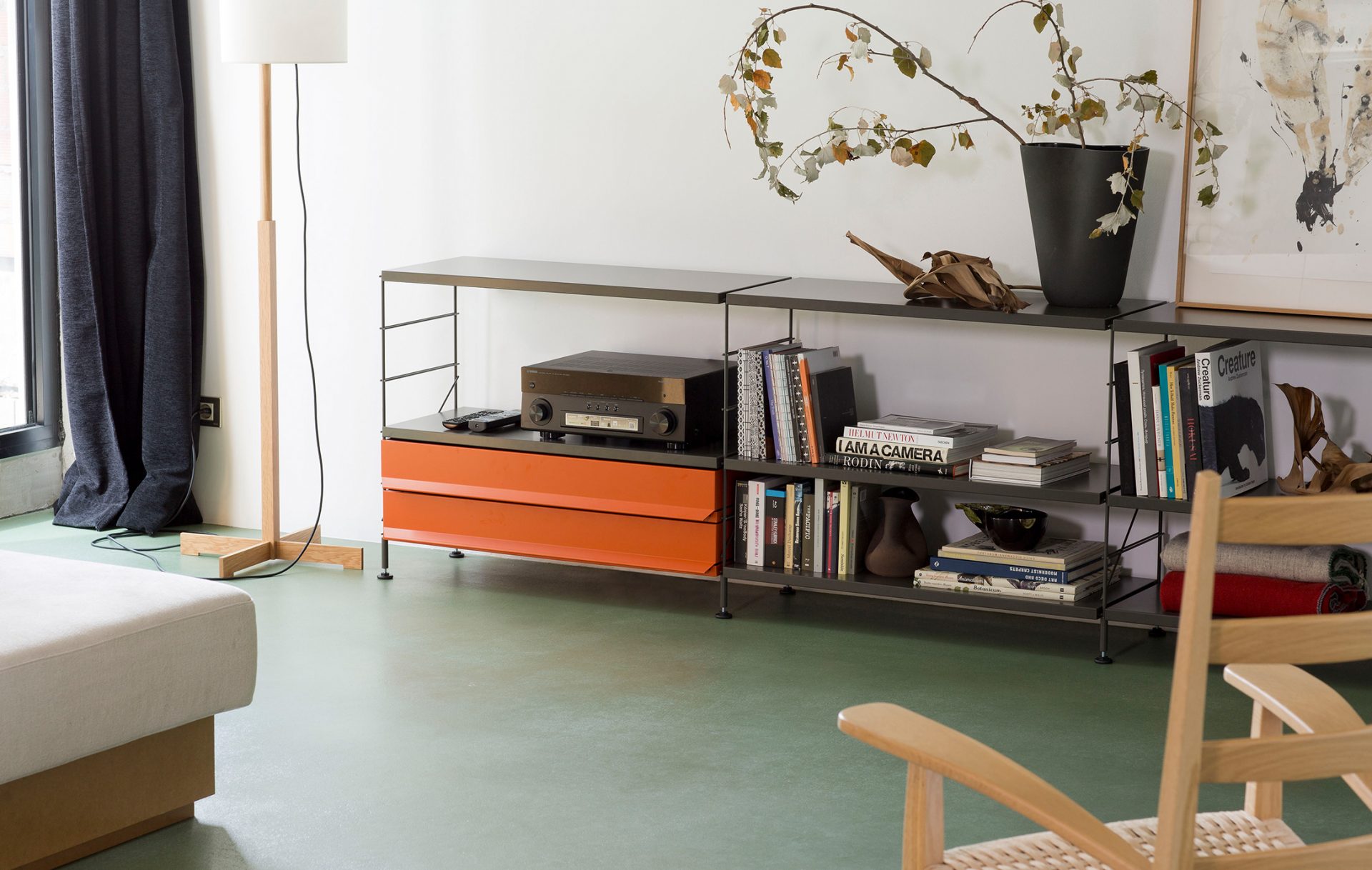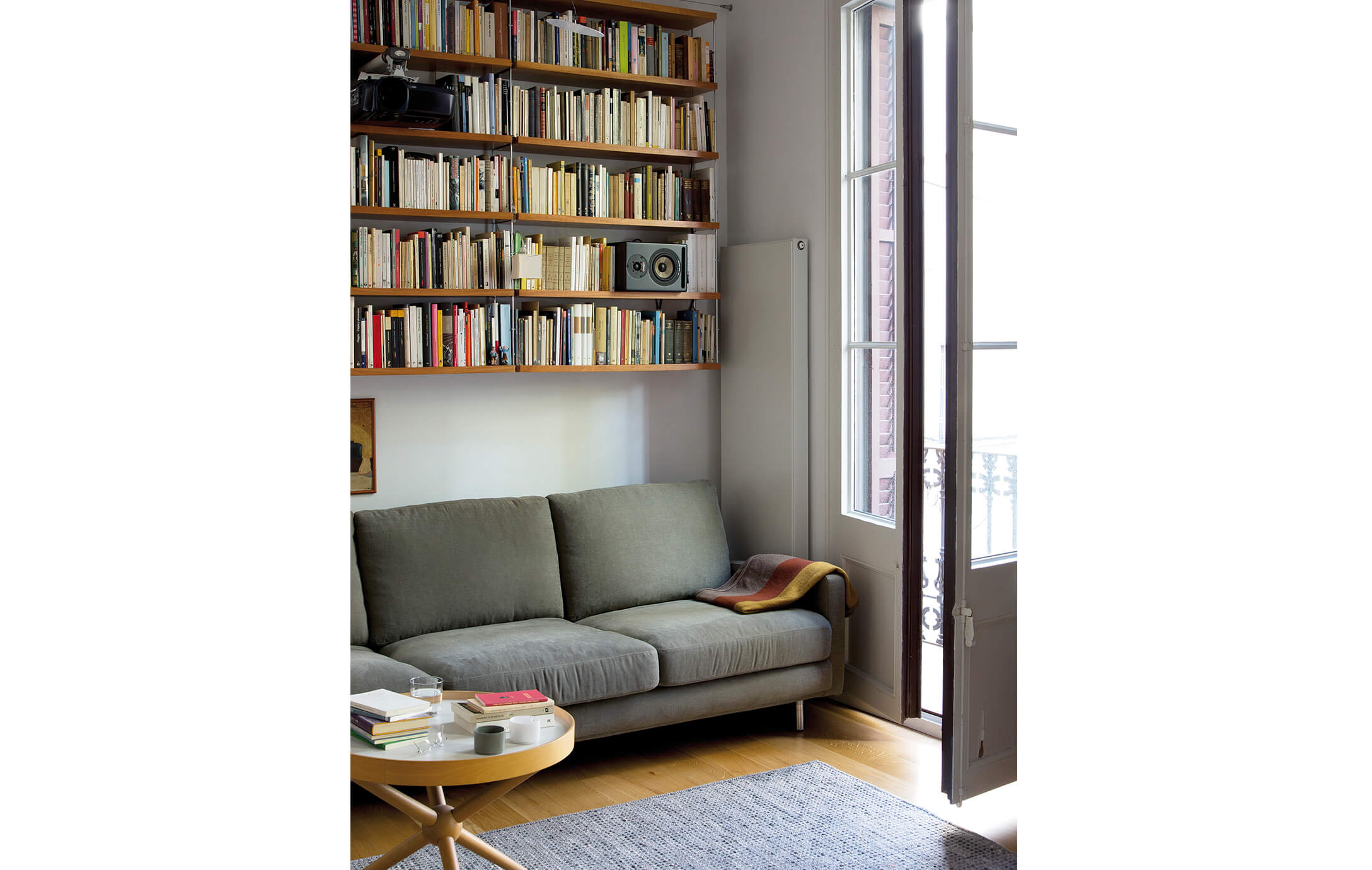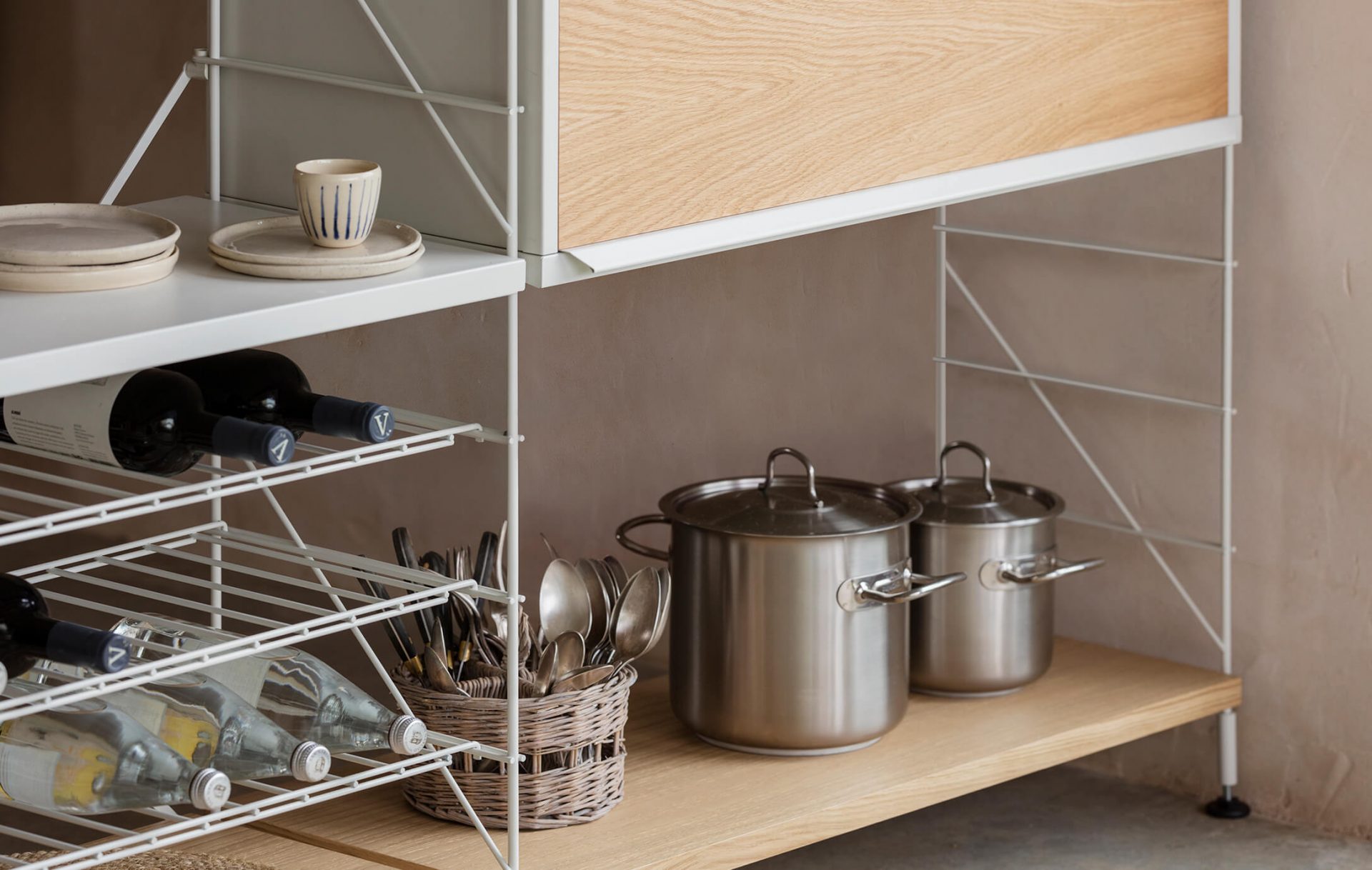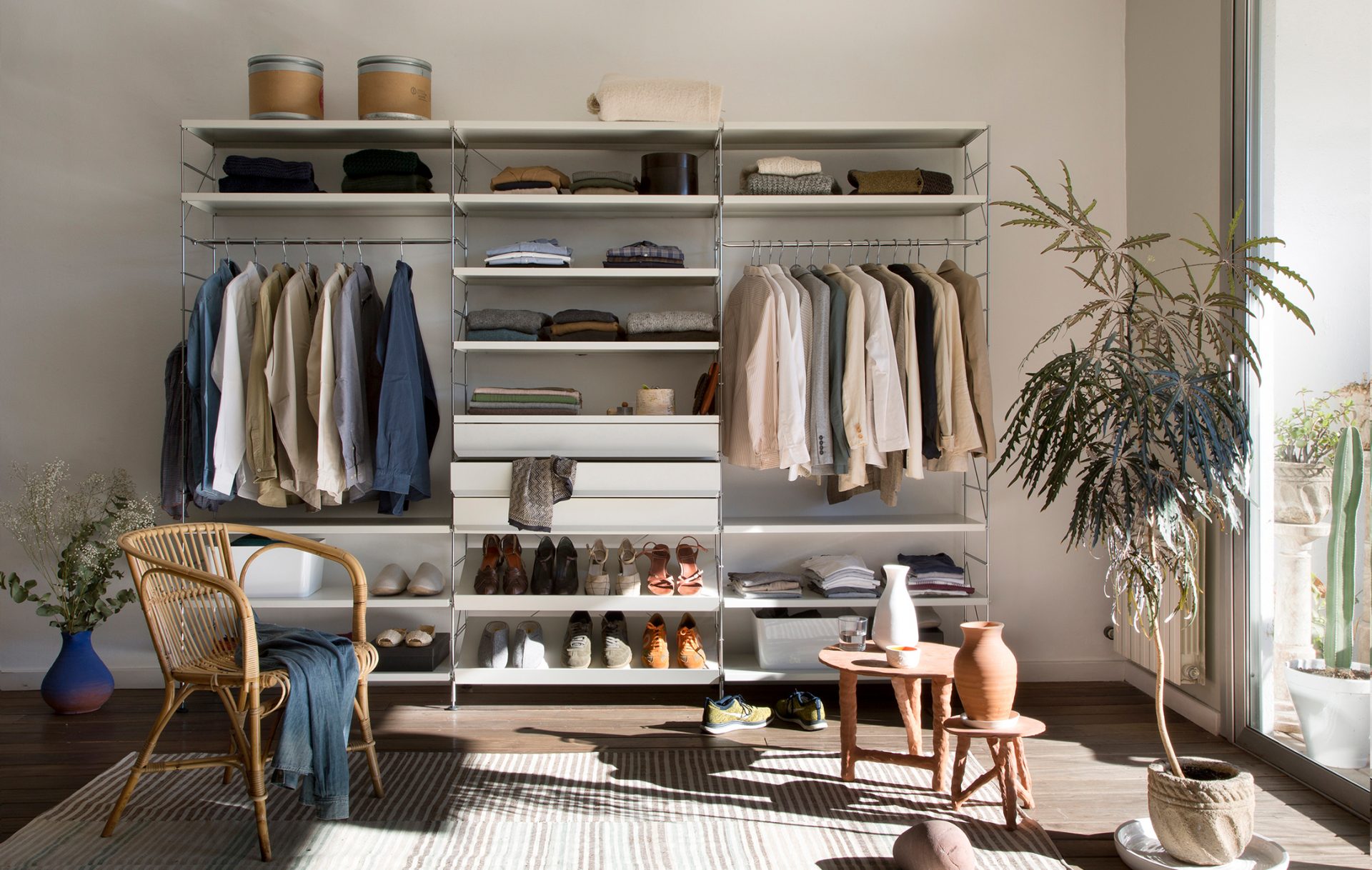Tria shelving unit, designed in 1978 by J.M. Massana and J.M. Tremoleda and produced by Mobles 114, is an example of timeless furniture that has become an icon in contemporary shelving. With 45 years of continuous presence in the market, it establishes itself as an essential element for any contemporary interior space.
One of its main features, linked to its timeless design, is its durability and quality, allowing it to adapt to new needs or functions. Since 1978, the system has evolved by incorporating new elements, in order to adapt Tria to the changing demands of daily life. The latest innovation has been the introduction of the self-supporting version with bar crosses, without altering its essence or aesthetics. This uniqueness makes it a shelving unit for a lifetime, a product transferable from generation to generation.
The simple and lightweight forms of this modular shelving unit suit all needs and different spaces, whether in residential areas or professional environments. It can be used in bathrooms, libraries, dressing rooms, home offices, children’s rooms, kitchens, living rooms, professional offices, retail spaces, among others. The variety of finishes offers the possibility to personalize compositions by combining materials, colors, and accessories to meet various functional and decorative needs.
Diseñada en 1978 por J.M.Massana y J.M.Tremoleda, TRIA constituye un diseño de estanterías icónico y atemporal que sigue siendo un diseño indispensable para cualquier interior contemporáneo.
La versatilidad y la flexibilidad vertebran el sistema de estanterías modular TRIA, diseñado para solventar todos los problemas de almacenamiento cotidiano. De formas sencillas y aspecto ligero, este funcional sistema modular se adapta a todas las necesidades y a los diversos espacios, tanto domésticos como públicos.
El sistema contempla infinitas posibilidades para su configuración gracias a los diferentes elementos y accesorios que la forman. Se permite personalizar las composiciones, combinando materiales, colores y accesorios, dando solución a diferentes necesidades funcionales y decorativas en salas de estar, recibidores, cocinas, vestidores, habitaciones, baños, librerías, oficinas domésticas, retail y salas de lectura.
Otro de sus puntos fuertes, ligados a su atemporalidad, es su resistencia y escalabilidad. Desde su lanzamiento a finales de la década de los 70, el sistema ha ido ampliándose, adaptándose a las nuevas necesidades cotidianas. Sin embargo, esto no ha alterado ni su esencia ni su estética, peculiaridad distintiva que lo convierte en un diseño para toda la vida y transferible de generación en generación.
